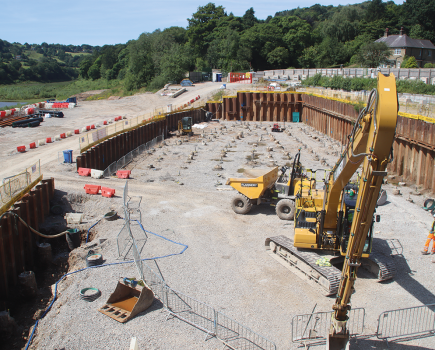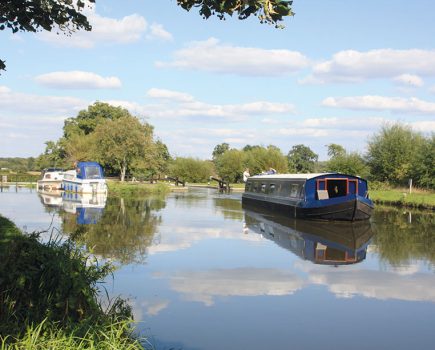CB columnist and award-winning current affairs TV producer, journalist and author Steve Haywood should be in favour of blacking – but is he?

Years ago, we owned an amateur-built boat in the Springer style: a tribute boat, I called it.
Except that where Springers were robust, no-nonsense craft with straight(ish) sides, this was a frail creature, so light that in a good wind it bobbed around on the water like a balloon.
It was built – hull and superstructure – in what was then termed 10 Gauge steel. From new, this came out at a little over 3.5mm. But this boat wasn’t new. Believe me, when you have a boat with steel you suspect of being THAT thin, you look after it.
We used to take it out of the water every couple of years, which is common now, but it was unusual in those days when the only steel boats around were former working boats, either cut down to see out their last years as hire boats, or bought by over-eager enthusiasts who didn’t quite know what they’d let themselves in for.
When we were in dock, we’d pamper the steel with lavish attention. But I was never satisfied. What about the bottom, I kept asking? What about the steel underneath? On the baseplate?
For my pains, I was laughed at. Steel baseplates didn’t rust, I was told by the experts. They were underwater – they didn’t need blacking.
I was never persuaded by this consensus wisdom and one year, in Tooley’s in Banbury, I let the boat down on railway sleepers stacked high enough to let me slide underneath on the wet dock floor.
There I found a series of small sludge smudges. I poked them with an old screwdriver and some were firm. However, the bright steel beneath betrayed the unmistakable sign of electrolysis corrosion. And most were completely rotten.
The fact was, the baseplate was disintegrating. One good scrape over a supermarket trolley and it’d have been ripped to shreds.
I mention this because you’d think that, after an experience like this, I’d be in favour of the facility being offered nowadays to black baseplates. I’d be in favour of a ‘better safe than sorry’ policy of checking out any steel on a boat before it begins to cause trouble.
But I’m not. In fact, I’m sceptical of blacking baseplates and I fear that if it catches on, the insurance companies will be demanding it as a matter of course, and we boat owners will be faced with additional costs on top of already high docking fees.
Of course, I can see the sense in checking out the bottom of historic craft such as the 100-year-old Dutch barge I was looking at recently, which had been overplated on overplating many times in its long life.
And I can see the sense, too, in checking the baseplate of newer narrowboats where visible corrosion along the hull might indicate that cheap steel has been used.
But checking out EVERY baseplate of EVERY boat? As a matter of course? Modern baseplates are 10mm minimum, while many are much thicker.
They’d last for years even if they were dropped in the road – which they often are when the road’s dug up. The use of regularly replaced anodes to prevent electrolysis problems like the ones we had is commonplace too.
And canals simply don’t demand as much of boat bottoms as they used to. Believe it or not, they are deeper than they were in the 1970s and 80s.
And cleaner, too. I can barely remember the last time I had a good teeth-raking scrape over a junked bike…
What’s being sold here, I fear, is not reassurance about the state of the steel, but just plain reassurance. A newbie owner who’s shelled out thousands for a boat is vulnerable to any amount of insidious pressure on how to handle and maintain it.
But blacking baseplates is simply not necessary and frankly, they’d be better keeping their eyes on their gas lockers and under their rear decks, which, as any boatyard will attest, are far more susceptible to corrosion.
Besides, if the worst comes to the worst with a baseplate, you can always weld on another. That’s what we did with our old Springer. And it was still afloat 20 years later.
Next month, Steve takes on the EA. Until then, follow him on Twitter.
____________________
You may also like:
Steve Haywood: why Lincoln’s moorings take the biscuit
Maintenance: catching corrosion
Image(s) provided by:
Archant







